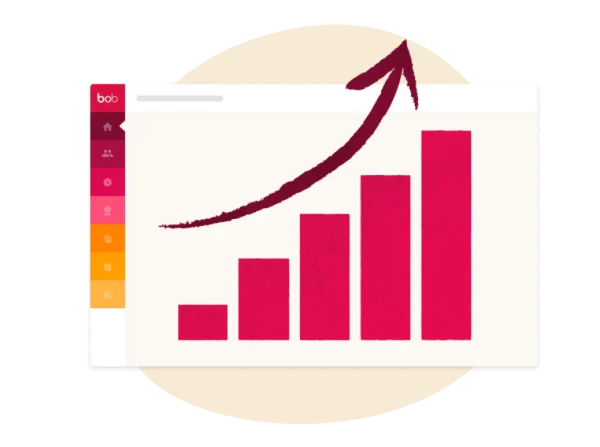What were the principal issues of businesses over the past 12 months, and how are these expected to change in the future? How essential is investing in HR software to companies, and what are their most important considerations when looking to invest? To find out, we undertook a research project* together with CIPD where we surveyed 1,305 managers based in the UK who have HR decision-making responsibilities and are either junior managers, team leaders, or supervisor levels and above.
What were the top business concerns for organisations in the past?
We asked managers to choose from a list of 20 options, three areas they considered to be top business focus in the past year. They also had the option to say that they didn’t know or to jot down a different business focus.
The options, displayed in random order, included:
- Retention/reducing employee turnover
- Streamlining HR operations and processes
- Skills and capabilities
- Workforce planning/succession planning
- Rapid growth
The following graph shows the top five business concerns in the past 12 months (summer 2021 to summer 2022) as selected by the respondents.
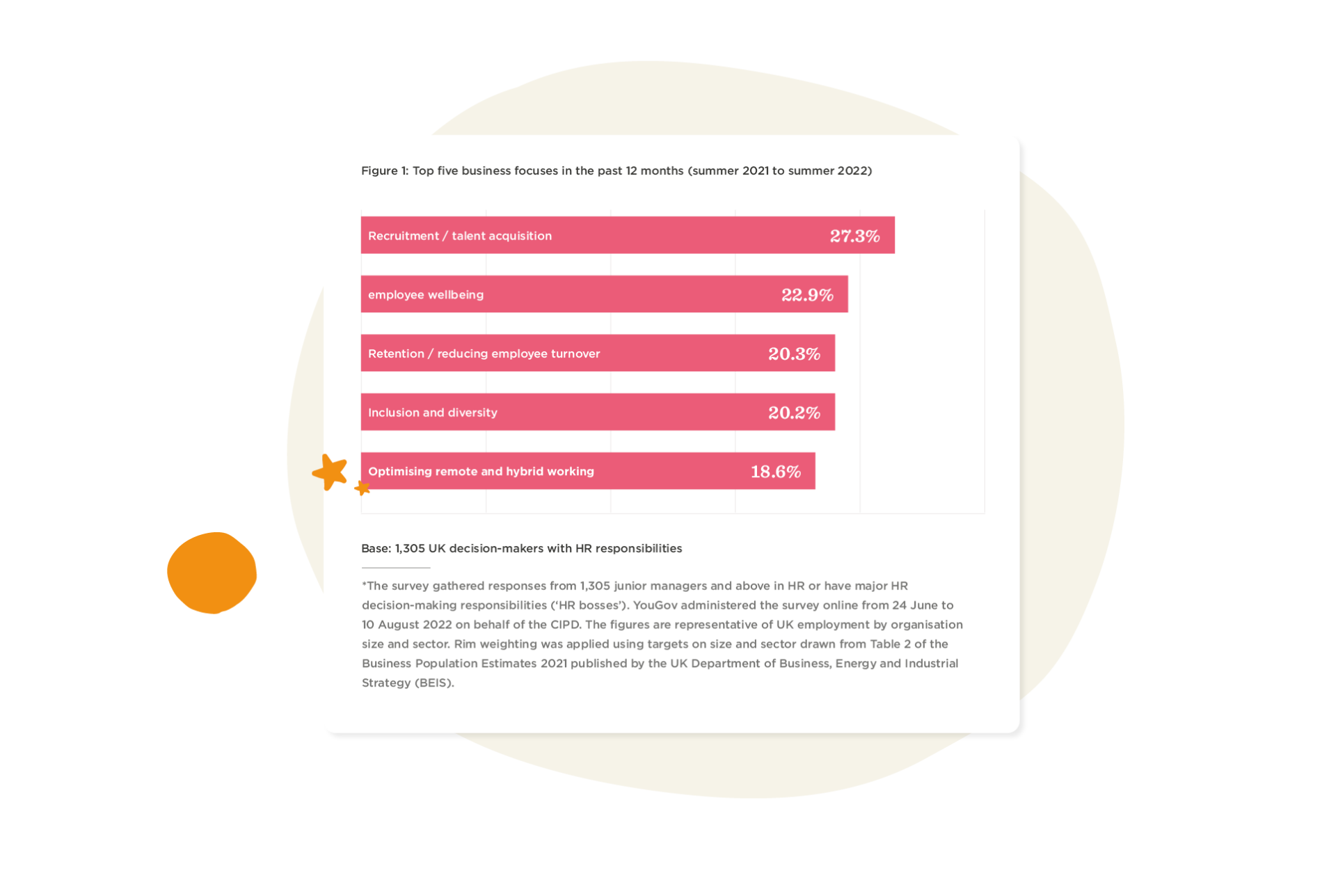
We saw that recruitment/talent acquisition was a top priority for managers in the past 12 months (27.3 percent). The emphasis on recruitment can be attributed to an increase in hiring in the media, restaurants, hotels, nightclubs, and other businesses that temporarily closed or let people go during the pandemic and then scrambled to recruit again when social distancing measures gradually lifted in the UK in 2021.
Employee wellbeing was also a priority for companies in the past year, with 22.9 percent choosing it as a top business focus. The pandemic, social distancing, and lockdown had a profound impact on people’s mental health, and many companies reacted by placing employee wellbeing at the top of their agendas.
How are companies prioritising investment in HR software?
As part of our research, we were interested to see whether investing in HR software is a business focus for companies today. So we asked managers if they had current plans to invest in HR software (Figure 2). Investment here includes buying, upgrading, replacing, or adding new features to existing software.
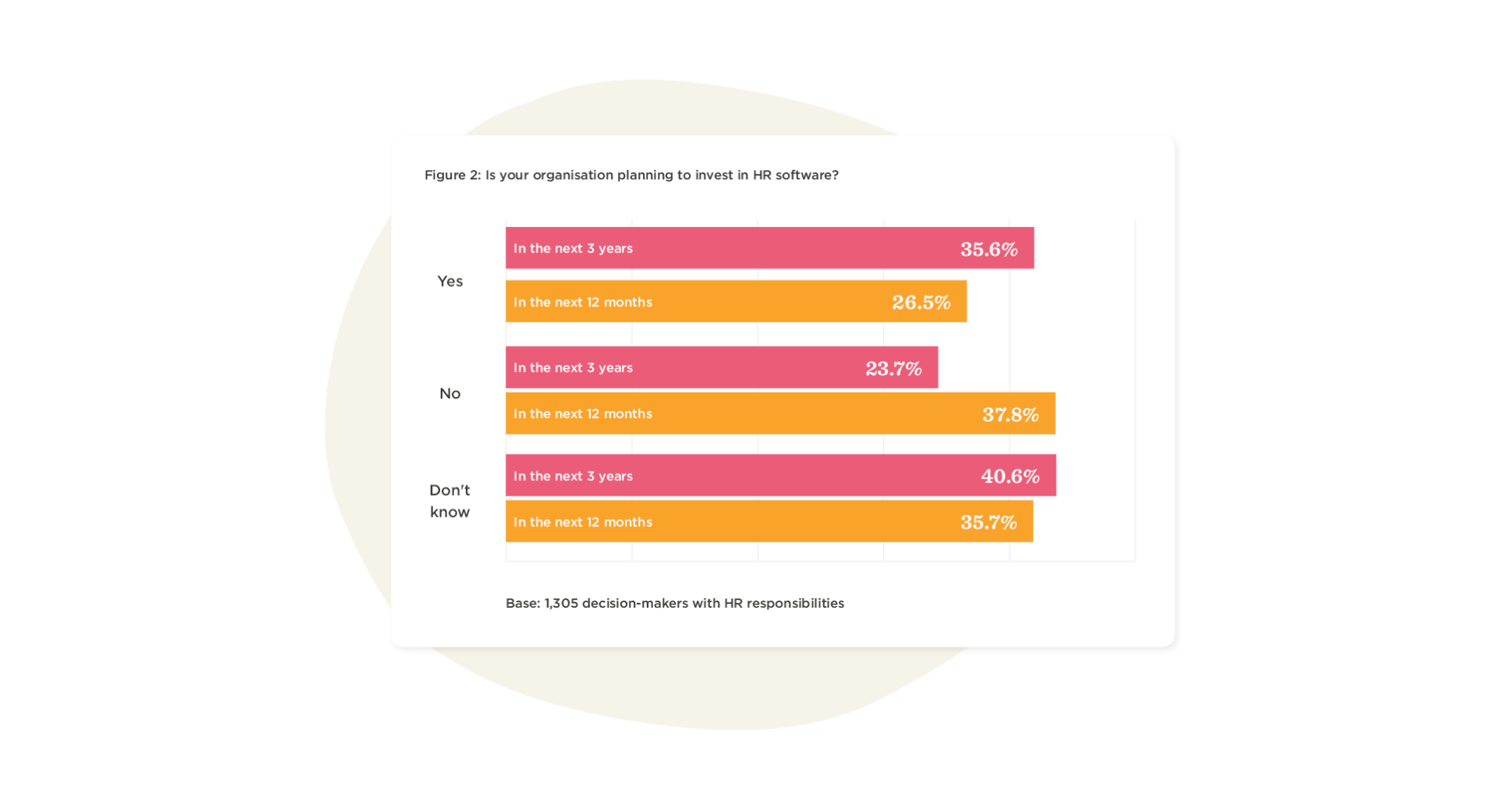
More respondents said that their organisation has plans to invest in HR software in the next three years (35.6 percent) than in the next 12 months (26.5 percent). These responses were more likely to come from large organisations (over 250 employees worldwide) than from medium-sized organisations (50 to 250 employees worldwide).
Reducing cost, simplifying work, and rapid growth were some of the reasons given by managers in organisations that plan to invest in HR software in the next 12 months or three years. In organisations with no plans to invest in HR software, some said they had HR software that is relatively new or that it’s a low priority for the company.
Four in ten managers (40.6 percent) didn’t know if their organisations have plans to invest in HR software in the next three years. Those who said that tend to have HR decision-making responsibilities but don’t work within an HR function, are in lower management levels or work in the public or third sectors. Decisions to invest in HR software in public sector organisations like the NHS, civil service, and schools are commonly decided centrally.
Which types of HR software are companies looking to invest in?
For organisations that do have plans to invest in HR software over the next 12 months or 3 years, most stated that they wanted to invest in an HRIS—52.3 percent and 42.7 percent respectively (Figures 3 and 4). This is because having a good HRIS is essential for efficient HR administration as an organisation evolves. Nowadays, many HRIS do more than just store, update and track employee information. They include other essential features such as people analytics, performance management, and employee surveys.
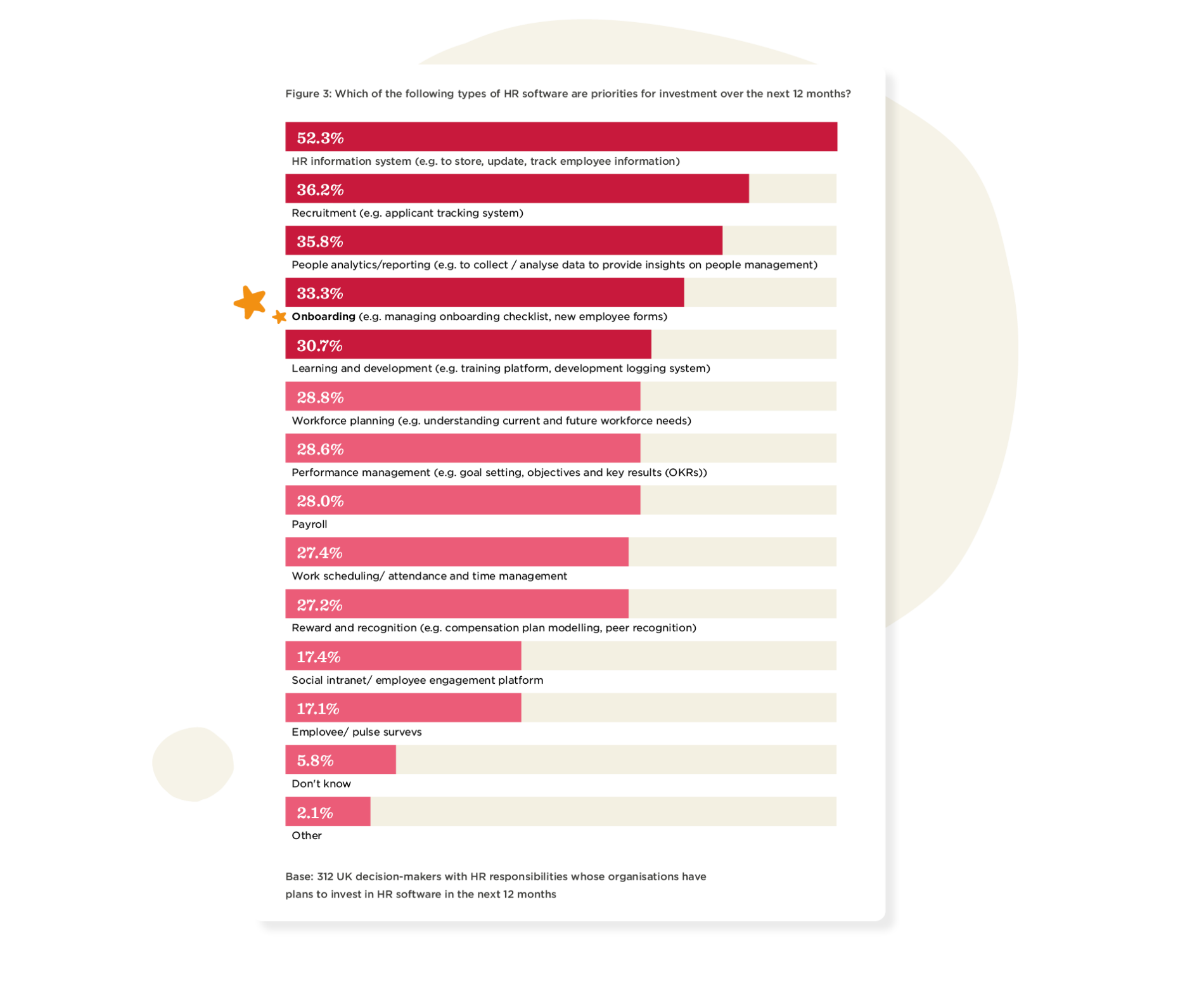
Looking ahead to the next three years, HR software investment priorities seem to shift along the employee lifecycle (Figure 4). Investment in learning and development and performance management software rise to second and fifth place, respectively, which can be attributed to organisations’ increasing concerns with retaining employees. Providing training and growth opportunities and incentivising employees with goal-setting and OKRs align with creating a work environment where employees feel appreciated and that the company invests in them, which contributes to increased retention.
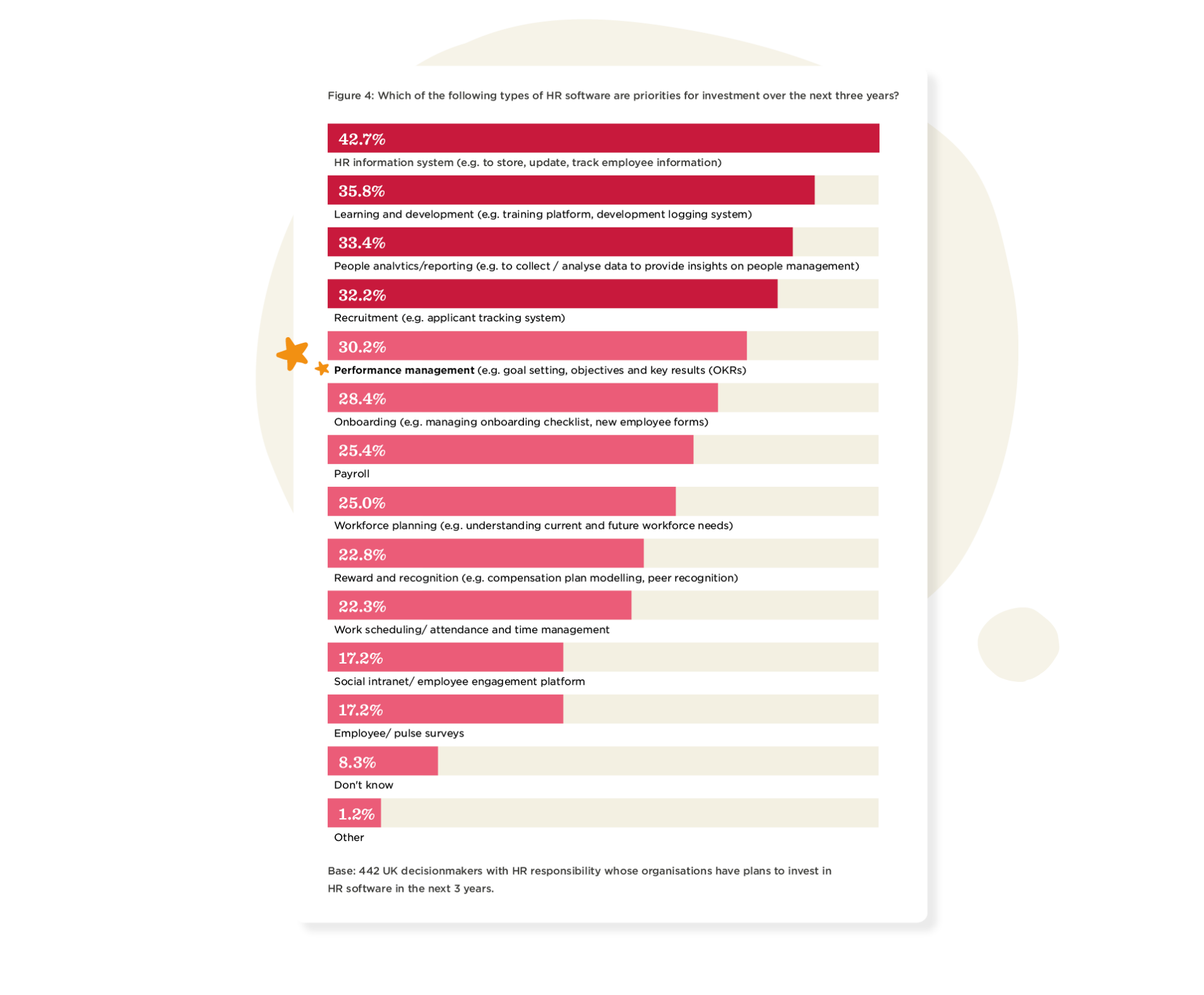
An all-in-one HRIS is the most popular choice for HR software
Finally, we asked the HR decision-makers for their top three considerations when choosing HR software and to rank them by personal preference. A first choice carries three times the weight of a third choice. Figure 5 shows our analysis of their preferences.
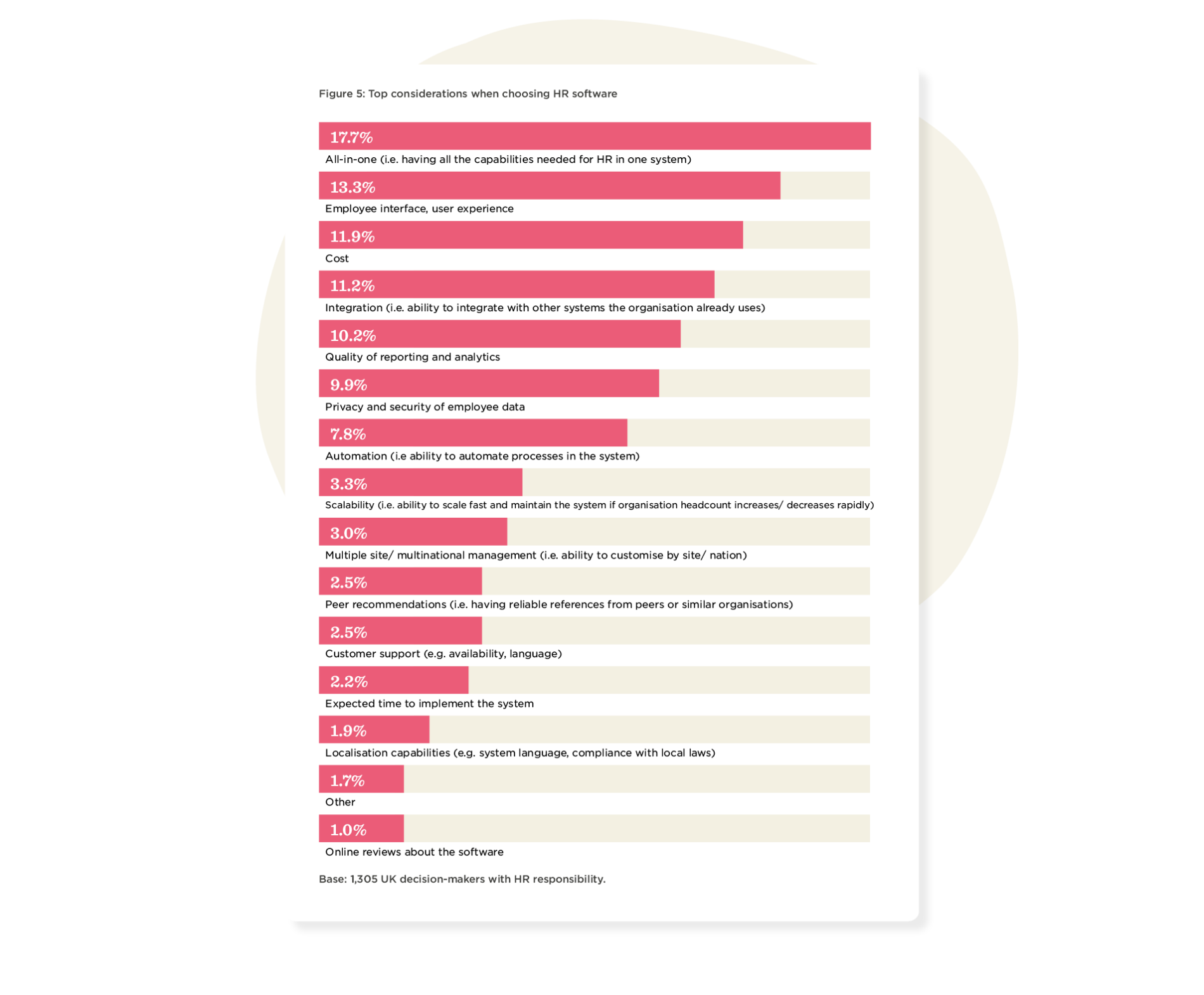
Our survey found that when choosing HR software, the top consideration is finding an all-in-one HRIS that has all the capabilities HR needs, such as performance management, workforce planning, compensation management, culture and engagement, people analytics, and more. Having one HR system means you have all your people data in one location, one tool to manage all your daily HR functions, a single log-in and password, and one vendor for troubleshooting and maintenance. An all-in-one HRIS is also the top consideration for those organisations looking to buy an HRIS within the next 12 months or three years, with over half (53.3 percent) saying it’s in their top three considerations.
An all-in-one solution also avoids the added costs of buying additional software (point solutions) and the complexity of integrating and maintaining several systems simultaneously. User experience is another priority for organisations today, with 13.3 percent stating it as a top consideration. Cost comes in third place (11.9 percent), followed by the ability to integrate with other systems, the quality of reporting and analytics, privacy and security of employee data, and automation. While peer recommendations and online reviews may be helpful for shortlisting HR software vendors, our findings show these are not the leading deal makers or breakers.
Recommended For Further Reading
Implementing an HRIS now takes centre stage
Our research among managers with HR responsibilities revealed that talent acquisition and employee wellbeing were the main concerns of UK-based organisations over the past 12 months, aligning with the impact of the pandemic and its after-effects. When looking specifically at organisations’ plans to invest in HR software in the future, over one-quarter of managers said that their organisation was looking to invest in the next 12 months, and over a third said that their organisation was looking to invest in the next three years, underlying the importance placed on HR software by HR leaders.
Our research also revealed that having an all-in-one HRIS is the most important consideration when choosing HR software for organisations in the UK, more crucial than cost or user experience. This highlights the value placed by many companies on having everything in one place rather than purchasing point solutions for different HR functions.
This research underscores the importance of HR software to organisations today. Whereas in the past, having technology specifically for managing HR was seen as nice to have, now, with the increased responsibilities of HR professionals, it’s an essential component for running HR in the modern workplace.
Meet Bob
At HiBob, we’ve built a modern HR platform designed for modern business needs—today and beyond.
We focused on building something that is robust yet intuitive and easy-to-use, which has led Bob to be the company culture platform of choice for thousands of fast-growing modern, mid-sized organizations.
For HR, it delivers automation of many common processes, allows greater oversight and visibility of the business, and centralizes all people data in a secure, user-friendly environment.
For managers, it provides access to data and insights to help them lead more effectively and streamline processes.
For employees, it’s the tools and information they need to connect, develop, and grow throughout their journey.
In a short time, Bob can be deployed to enable communication, collaboration, and connectivity that drives stronger engagement, productivity, and business outcomes.
